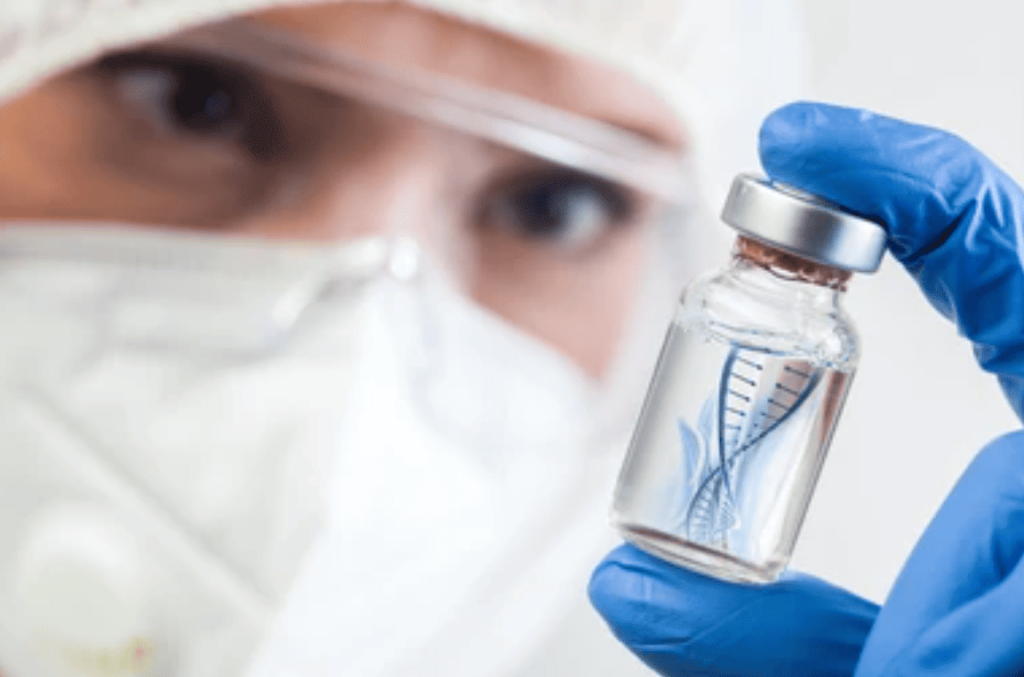Contents
Ever found yourself puzzled over the myriad of buffers used in biological experiments? I certainly have. One that particularly caught my attention is MOPS, or 3-morpholinopropane-1-sulfonic acid. Let me share what I’ve learned about its unique role in the lab.
MOPS functions as a zwitterionic buffer that maintains pH stability in biological and biochemical experiments, especially around pH 7.2. It’s particularly valuable because it doesn’t interfere with metal ions or enzymes, making it ideal for RNA electrophoresis and other sensitive applications where pH consistency is crucial.
Let’s delve deeper into why MOPS is such a go-to buffer in many labs, including my own.
How to make a MOPS buffer?
Preparing a MOPS buffer can seem daunting at first, but with the right approach, it’s straightforward. Here’s how I usually make it for my experiments.
To make a MOPS buffer, dissolve MOPS powder in distilled water, adjust the pH to the desired level using NaOH or HCl, and then bring the solution to the final volume. Typically, a 10 mM to 50 mM concentration is used, depending on the application.
Diving deeper, let’s look at the step-by-step process.
Materials Needed
- MOPS powder
- Distilled water1
- pH meter
- NaOH or HCl for pH adjustment
Volumetric flask2
Step-by-Step Guide
- Weigh the MOPS powder: Calculate the amount needed for your desired molarity. For instance, for a 10 mM solution in 1 liter, you’d need 2.09 grams of MOPS.
- Dissolve in distilled water: Add the MOPS powder to about 800 ml of distilled water in a beaker.
- Adjust the pH: Using a pH meter, measure the pH of the solution. Slowly add NaOH or HCl to adjust the pH to around 7.2. I often find that adding NaOH works best since MOPS is slightly acidic.
- Bring to final volume: Transfer the solution to a volumetric flask and add distilled water up to the 1-liter mark.
- Filter and sterilize if necessary: For sensitive applications, filter the solution using a 0.22 µm filter.
Tips and Tricks
- Avoid contamination: Always use clean equipment to prevent contamination.
- Storage: Store the buffer at room temperature or refrigerated, depending on your needs.
Here’s a quick reference table:
| Desired Molarity (M) | Amount of MOPS (g/L) |
|---|---|
| 0.01 | 2.09 |
| 0.05 | 10.45 |
| 0.1 | 20.9 |
By following these steps, I’ve been able to consistently prepare reliable MOPS buffers for my experiments.
Why is MOPS buffer used for RNA?
RNA work requires meticulous care, and choosing the right buffer is crucial. I discovered that MOPS buffer is particularly suited for RNA applications. Here’s why.
MOPS buffer is used for RNA because it maintains a stable pH near neutrality, crucial for RNA stability. It doesn’t chelate metal ions or inhibit enzymatic reactions, making it ideal for RNA electrophoresis and other protocols where RNA integrity is paramount.
The Importance of pH Stability
RNA is notoriously sensitive to degradation, and pH fluctuations can accelerate this process. MOPS buffer provides a stable environment around pH 7.0-7.5, which is optimal for RNA stability.
Compatibility with RNA Protocols
In my experience, MOPS doesn’t interfere with common reagents used in RNA protocols. For instance:
- Formaldehyde Gel Electrophoresis3: MOPS buffer is often used in formaldehyde agarose gels for RNA separation. Its buffering capacity ensures sharp bands without smearing.
- Enzymatic Reactions: MOPS doesn’t inhibit enzymes like reverse transcriptase4, making it suitable for cDNA synthesis5.
Metal Ion Independence
Unlike some buffers, MOPS doesn’t chelate metal ions. This is crucial because certain RNA enzymes require metal ions as cofactors. Using MOPS ensures that these ions remain available.
Personal Anecdote
I recall an instance when switching to MOPS buffer significantly improved the quality of my RNA gels. The bands were crisper, and the overall integrity of the RNA was preserved much better than with other buffers.
Here’s a comparison of buffers:
| Buffer | pH Range | Metal Ion Interaction | Suitable for RNA |
|---|---|---|---|
| MOPS | 6.5-7.9 | Minimal | Yes |
| Tris | 7.0-9.0 | Can interact | Less ideal |
| MES | 5.5-6.7 | Minimal | Less ideal due to pH |
By choosing MOPS, I’ve been able to enhance the reliability of my RNA experiments.
What is the difference between MES and MOPS buffer?
At times, I’ve wondered whether to use MES or MOPS buffer. Understanding their differences has helped me make informed choices in my experiments.
MES and MOPS are both zwitterionic buffers, but they differ in their effective pH ranges. MES is optimal for pH 5.5-6.7, making it suitable for acidic conditions, whereas MOPS works best at pH 6.5-7.9, ideal for neutral conditions. Their buffering capacities and applications vary accordingly.
Buffering Range Comparison
Understanding the buffering range is essential:
- MES Buffer: Effective between pH 5.5 and 6.7. Ideal for experiments requiring slightly acidic conditions.
- MOPS Buffer: Effective between pH 6.5 and 7.9. Best for neutral pH applications.
Application Differences
In my lab work:
- MES: I’ve used MES when working with proteins or enzymes that function optimally at acidic pH.
- MOPS: Preferred for cell culture media and nucleic acid work where neutral pH is crucial.
Chemical Properties
| Property | MES | MOPS |
|---|---|---|
| pKa at 25°C | 6.15 | 7.20 |
| Molecular Weight | 195.24 g/mol | 209.26 g/mol |
| UV Absorbance | Low at 260 nm and 280 nm | Low at 260 nm and 280 nm |
Personal Insight
Switching between MES and MOPS has allowed me to tailor the pH environment precisely. For instance, when I needed to adjust an enzyme assay from pH 6.0 to 7.0, moving from MES to MOPS buffer made a significant difference in enzyme activity.
By understanding these differences, you can select the buffer that best suits your experimental needs.
Which buffer is better MES or MOPS?
Choosing between MES and MOPS often comes down to specific experimental requirements. Let me share how I decide which buffer is better for a given situation.
Neither MES nor MOPS is universally better; the choice depends on the desired pH range and experimental conditions. MES is better for acidic pH (5.5-6.7), while MOPS is better for neutral pH (6.5-7.9). Selecting the appropriate buffer ensures optimal results in your experiments.
Factors to Consider
When deciding between MES and MOPS, I consider:
- pH Requirements: Match the buffer’s effective range with your experiment’s pH.
- Compatibility: Ensure the buffer doesn’t interfere with reagents or enzymes.
- Temperature Stability: Both buffers are stable, but slight differences can matter in sensitive experiments.
Personal Experiences
- Using MES: In a project studying acidophilic bacteria, MES buffer provided the acidic conditions needed without harming the cells.
- Using MOPS: For cell culture media where cells require a neutral pH, MOPS has been invaluable.
Pros and Cons
| Buffer | Pros | Cons |
|---|---|---|
| MES | Ideal for acidic pH, minimal interference | Limited to lower pH applications |
| MOPS | Ideal for neutral pH, versatile | Not suitable for acidic conditions |
Conclusion on Choice
In essence, the “better” buffer is the one that aligns with your experimental needs. By carefully evaluating the conditions, I’ve been able to choose the buffer that enhances the reliability and accuracy of my results.
Sometimes, I’ve even used both in different parts of an experiment to maintain optimal conditions throughout.
Conclusion
Understanding the function and applications of MOPS buffer has greatly enhanced my lab work. Whether it’s preparing the buffer correctly or choosing between MOPS and MES, making informed decisions leads to better experimental outcomes. I hope sharing my experiences helps you in your own scientific journey.
-
The link on ‘Distilled water’ offers insights into its purification process and importance in experimental setups.” ↩
-
The ‘Volumetric flask’ link provides instructions on its correct usage for precise solution preparations. ↩
-
The ‘Formaldehyde Gel Electrophoresis’ link explains the process and its effectiveness in separating RNA molecules.” ↩
-
Clicking on ‘reverse transcriptase’ will provide you with detailed information about its function in molecular biology techniques. ↩
-
The ‘cDNA synthesis’ link offers a comprehensive overview of the process and its applications in research. ↩











